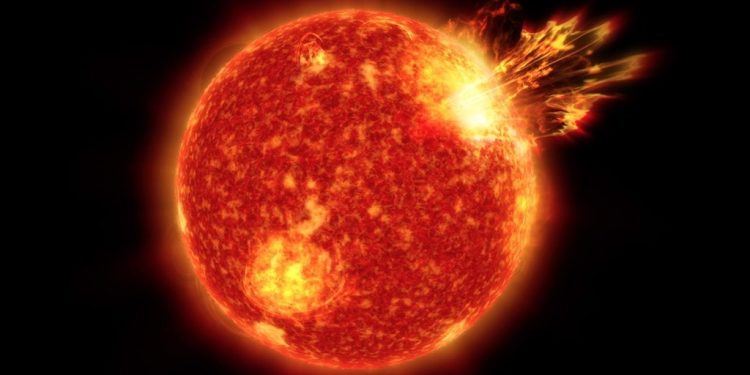The next solar maximum, set to begin in 2025, is predicted to be stronger than its predecessor, potentially causing disruptions to our power grid, and radio communications, and posing health risks to astronauts. While most people on Earth won’t directly experience these effects, the consequences for technology and space exploration could be significant.
The Solar Maximum: A Peak in Solar Activity
The solar maximum marks the point when the Sun’s magnetic field is at its most intense and disordered. This heightened solar activity can lead to extreme space weather events, such as solar flares and eruptions. While these events are unlikely to impact individuals on Earth, they can cause disruptions to radio communications, and the power grid and pose health hazards for astronauts in space.
A Stronger Solar Maximum on the Horizon
Solar cycles typically span 11 years, with the solar maximum occurring around the midway point. The last solar maximum, which took place between 2012 and 2014, was unusually weak, resulting in less severe space weather. However, the upcoming solar maximum is expected to return to average levels, potentially leading to greater impacts on space weather and related consequences.
How Earth Might Be Affected
Solar activity is primarily driven by the movement of plasma within the Sun, which influences the solar magnetic field. At its peak during the solar maximum, this magnetic field generates an increase in events like solar flares and coronal mass ejections (CMEs).
Solar flares emit high-energy photons, such as X-rays, that can disrupt radio communications on Earth. CMEs, on the other hand, are eruptions of solar magnetic field and material that can trigger geomagnetic storms, damaging our power distribution grid. During the solar maximum, we can also expect more high-energy particle bursts, which pose a significant health risk to astronauts and crews on high-latitude and high-altitude aircraft. These particles can also damage space hardware and result in satellite loss.
Most Effects Remain Unnoticed
The majority of the solar maximum’s effects are short-lived, making them difficult to study conclusively. Even if solar activity causes a power grid issue, it’s often challenging to establish a direct link. One predictable outcome is the increased frequency of auroras at different latitudes. Scientists have also observed solar cycle-related changes in Earth’s stratosphere, including temperature and ozone level fluctuations.
Although these solar-induced changes are considered when analyzing long-term climate variations, they don’t pose as significant a threat as factors like volcanic activity, carbon dioxide emissions, and other human activities.
Growing Reliance on Technology Amplifies Risks
Our dependence on technology and space continues to grow, making space weather an increasing concern. The primary issue is the threat it poses to the power grid, which could lead to cascading hazards in the event of prolonged power outages. A stronger solar cycle simply means a higher probability of extreme space weather events, though it doesn’t guarantee them.
Extreme space weather can still occur during weak solar cycles, as demonstrated by a powerful CME observed during the last solar maximum. If directed at Earth, such a CME could have caused significant disruptions to our power grid and satellite hardware.
PLEASE READ: Have something to add? Visit Curiosmos on Facebook. Join the discussion in our mobile Telegram group. Also, follow us on Google News.











